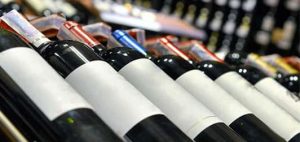Fraud and wine, the intelligence of colors in the service of the fight against counterfeiting
In China, it’s three out of four bottles.”
Novice consumers are the first victims of deception by counterfeit fine wines.
Fraud on the appearance and/or substitution of wines requires increased security. The method is simple: counterfeiters look for the original bottles (e.g. in restaurant garbage cans). Then, they reproduce the label and fill the bottle with a cheap wine, in order to resell it as a bottle of grand cru or a prestigious wine and thus make profits. This deception is almost undetectable by novice consumers.
In China, it is not uncommon to find websites that directly resell the original bottle of certain grands crus in large quantities. Channels are organized for the recovery of empty bottles in places of consumption (restaurant, hotel, wine bar, wine shop…).
Can the fight against fraud be won?
 It’s a perpetual battle against ever more sophisticated materials, admits Michaël Egan (independent expert on large bottles). Counterfeiters are now able to replicate holograms. Technology certainly makes it possible to design labels that are more difficult to copy, with inlaid numbers that are invisible without a magnifying glass, paints that are only detectable under UV light… But we need to improve the traceability of the bottles; create a database and secure the industry with systematic identification of exporters and intermediaries.”
It’s a perpetual battle against ever more sophisticated materials, admits Michaël Egan (independent expert on large bottles). Counterfeiters are now able to replicate holograms. Technology certainly makes it possible to design labels that are more difficult to copy, with inlaid numbers that are invisible without a magnifying glass, paints that are only detectable under UV light… But we need to improve the traceability of the bottles; create a database and secure the industry with systematic identification of exporters and intermediaries.”
On June 22, 2017, the Bordeaux wine interprofession and Customs signed an agreement to strengthen the fight against counterfeiting, via a new device affixed to bottles, a seal that will replace the “Marianne capsule” on the neck of bottles.
The agreement “is a first for Customs with an inter-profession in the wine industry”, according to Corinne Cleostrate (head of the Customs intelligence service), who calls for similar advances with other French vineyards, to secure the wine sector. Second surplus sector of the trade balance, after aeronautics, it exports nearly eight billion euros of wine each year, recall the Customs.
The intelligence of colors for security and traceability
In the field of anti-counterfeiting, the idea of exploiting the “intelligent color change” property is gaining ground.
The simple color change of an activatable ink, for example by the flash of a phone, can allow anyone to identify the authenticity of a label.
The insertion of an irreversible color change tracker can indicate an attempt to remove the cap (with steam, for example) in order to substitute the vintage.
The development of this generation of SmartKrom® allows the generation of a visual alert that can be understood by everyone! No wired implementation is necessary and the application is done by a simple deposit of ink, paint…
OliKrom has become a key player in this booming field by developing “tailor-made” solutions from idea to production. Our team of expert doctors and engineers is at your disposal.

